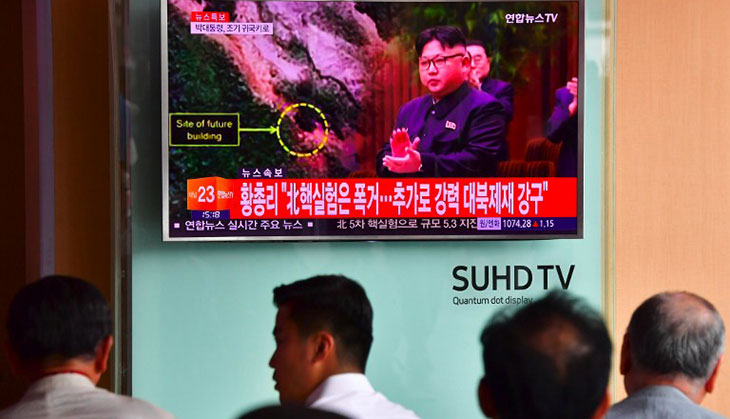Why North Korea’s nuclear threat must be taken more seriously than ever
During what was the 2017 Easter weekend for most of the world, North Koreans celebrated the “Day of the Sun”. It was the 105th birthday of the country’s late founding leader and “eternal president” Kim Il-sung (1912-1994).

Thousands of soldiers, military vehicles and, most notably, various ballistic missiles were paraded for the inspection of current supreme leader Kim Jong-Un (Kim Il-sung’s grandson).
But it wasn’t the parade that signalled North Korea’s belligerence; numerous other countries hold military parades to mark some significant occasion or another.
Instead, what was clearly aggressive was the presentation of a mock-up video of the country’s ballistic missiles destroying an American city during a national musical performance.
This video is the most visceral expression yet of Pyongyang’s intentions. Its telecast was likely timed to coincide with the expected arrival of the US Navy’s aircraft carrier, the USS Carl Vinson, and its accompanying fleet of warships in Korean waters.
Inching closer
On April 8, US President Donald Trump and other American officials told the media that the Carl Vinson had been ordered to make its way towards the Korean peninsula. The likely plan was to demonstrate American resolve in managing the crisis that North Korea’s nuclear weapons program has created.
Subsequent revelations that the warship was actually heading south for exercises with the Australian Navy at the time showed a series of blunders in internal communication. But the fact that the Carl Vinson has arrived off Korean waters two weeks later does not change the prospect of a military conflict between North Korea and the United States.
The key question is whether North Korea does have nuclear weapons that it can readily use against the United States and its regional allies, South Korea and Japan. It’s still unlikely North Korea has the current capability to launch a nuclear-tipped intercontinental ballistic missile that can destroy an American city.
North Korea’s scientists have yet to master the technology to build missiles that can traverse this distance and to construct warheads that can survive re-entry into the Earth’s atmosphere after space flight.
But years of testing has allowed North Korea to inch closer to getting right the extremely demanding science of building and launching viable intercontinental nuclear weapons. And this is why the United States is against further testing, to the point that the Trump administration seems serious about justifying pre-emptive strikes on the basis of further nuclear and missile tests.
What is of immediate concern is that previous tests have led to North Korea being able to achieve the relatively easier requirements of building workable medium-range ballistic missiles, with small enough warheads, to strike American bases in South Korea and Japan. These have about 80,000 US military personnel in total.
Approaching catastrophe
- Pak's 'confession' game: now ex-Pak Taliban spokesman claims India supported it
- It's time for France to face its past and debate crimes against humanity
- In Photos: India’s Srishti Kaur wins Miss Teen Universe 2017
- The fate of Europe will depend on the winner of the French presidential election
- Panama Papers: Pak SC gives Nawaz Sharif relief. But will probe be an eyewash?

